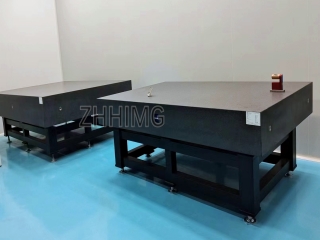Granite rulers are essential tools for precision measurement and are widely used in a variety of industries due to their stability, durability and resistance to thermal expansion. The measurement methods used by granite rulers are essential to ensure accuracy and reliability in engineering and manufacturing processes.
One of the main measurement methods is to use a granite platform, which provides a flat reference surface for measuring the dimensions of the workpiece. This method is particularly effective for checking flatness, perpendicularity and parallelism. By placing the workpiece on the granite surface, technicians can use a micrometer or height gauge to obtain accurate measurements. The inherent rigidity of granite ensures that the surface remains stable, minimizing the risk of deformation during measurement.
Another common method is to use a granite ruler in conjunction with an optical instrument. For example, a granite ruler can be used as a guide for a laser measurement system when measuring large components. This combination allows for high-precision measurements over long distances, making it ideal for applications in the aerospace and automotive industries.
Granite rulers have a wide range of applications. In the manufacturing industry, they are used in quality control processes to ensure that parts meet specified tolerances. In the field of metrology, granite rulers are used in calibration laboratories to verify the accuracy of measuring instruments. Additionally, in the construction industry, granite rulers help with layout work, ensuring that buildings are constructed to precise specifications.
In summary, the measurement methods and application examples of granite rulers highlight their importance in achieving accuracy in various fields. Their ability to provide a stable and accurate reference point makes them an indispensable tool for engineers and technicians to ensure that quality standards are always met.
Post time: Dec-10-2024

